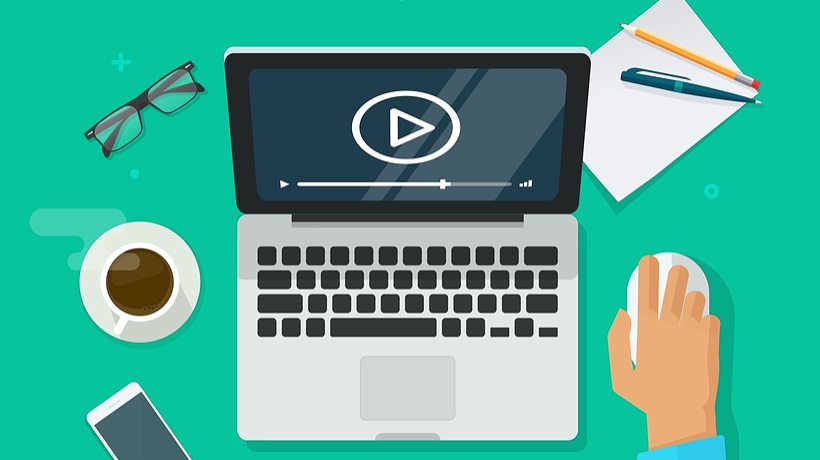The Impact Of Using Video In Higher Education
Video learning holds an important place in the new learning environment of (higher) education and has helped to reinvent the way people learn. Video is a powerful way to build and maintain student engagement in classrooms and to ensure that learning can take place at a deeper level. When students are able to see something in action and interact with it in more than one way they process the information in a manner that builds lasting connections. Video learning encompasses the use of video in (higher) education spanning all disciplines for the purpose of educating and meeting learners’ needs, and serves mixed purposes ranging from teaching to studying in traditional learning environments.
Previous and ongoing research overwhelmingly supports the positive effects of using video and imagery in education, with a constant stream of studies illustrating the multidimensional impacts of video in the overall teaching and learning experience. Peter Duffy’s Engaging the YouTube Google-Eyed Generation: Strategies for Using Web 2.0 in Teaching and Learning shows the impact of Web 2.0 technologies and how video-based approaches can make learning last in education. Yagoub Zahedi and Mortaza Abdi’s The Impact of Imagery Strategy on EFL Learners’ Vocabulary Learning revealed that students’ mastery of knowledge in foreign language learning was associated with the use of imagery.
Describing a few of the literally thousands of illuminating articles in these fields can move one to consider implementing even a small degree of video-based learning in the classroom. Learning through video has led to the growth of a multi-billion dollar industry; but, more importantly, it presents an enormity of possibilities for people facing learning challenges on a daily basis, and burgeoning interest in the way instructors teach in the field of education.
Video Learning Truths, Untruths, And Benefits
However, in spite of growing interest in the use of video learning and the constant development of video learning tools that present instructors and students alike with opportunities for knowledge development, there remains an endless reign of misconceptions about their role and how to get the most out of them.
- Videos have been related to the concept of passive learning, where student merely watch the screen and attempt to learn from seeing and hearing.
Video learning can be deeply interactive, presenting a dimension of the virtual environment in which students can speak to the program, answer its questions verbally and through a script, and engage in quizzes and games. - In spite of (mis)perceptions that video learning controls the pace of learning, video learning is highly adaptive, catering to the pace and needs of the learner.
Videos can be managed using various controls features associated with a given program. The learner can move forward, backward, stop, pause, increase the speed, increase the visual quality, add subtitles, and so on. Thus, learners can feel like they are in control of their own personal learning process and satisfy some of the needs of a kinesthetic learner rather than students simply watching or listening to a video and acting as static recipients of data. - Video learning can also be adaptive to different learning styles.
Videos can always be adjusted, updated, edited, and amended in the event that students are inclined to learn through a higher degree of visualizations such as pictorials, whereas other students may connect better with text on a screen in combination with an audio lecture. - Videos are portable!
Videos provide an incredible degree of flexibility for both instructors and learners. There is basically no place in the world where videos and video lessons can be accessed. Therefore, video learning is not only flexible but also enables instructors a greater reach in their educational practice. Student living in rural locations can benefit equally from the use of video learning as students living in major cities or urban centers. For students studying on campus in higher education, video learning makes it possible for the instructor to bring what’s out there into the classroom. - Video learning pushes students to think about a problem or an issue even if they do not have a ready-made answer or solution to that problem.
In doing so, students are actually developing strong problem-solving skills and elastic thinking. Visual aspects of video learning, the imagery, the movement, the associations, and combination of imagery with sounds and audio description can capture a student’s attention for an entire class with relative ease. Depending on the content of a video, video learning shares a strong relationship with the development of such skills as collaborative working, engagement, attention, complex problem-solving, and organization.
5 Best Practices For Engaging Video Learning
1. Optimal Video Length
To optimize the benefits of video learning, it is important for instructors to limit their use of video to a reasonable amount. Philip. J. Guo, Juho Kim, and Rob Rubin’s study, How Video Production Affects Student Engagement: An Empirical Study of MOOC Videos, highlights the percentage of a given video that a student watches over five different video lengths. They found that while students watched approximately 100% of videos between 0-6 minutes, they watched just below 100% for videos between 6-9 minutes in length. When videos were between 9-12 in length, students watched less than 60% of video and approximately 20% of videos between 12-40 in length.
During a lesson, it is advisable to use videos that are no more than 4-5 minute long. This is based on my experience with undergraduate and graduate students. Rather than resorting to a single, lengthy resource, I prefer to merge several different videos or Web 2.0 instruments. I find the variety to be incredibly productive, allowing me to retain student attention for a much longer period of time.
2. Informal Language
Informal discussion related to videos and the information presented within them has been shown to be more effective than the use of formal language with students. Why? They provide context and lots of it. Engagement in subsequent discussion increases because students tend to build connections with what they have watched with relative ease.
Related to the point about the length of videos used in classrooms, the use (or overuse) of formal language can be overwhelming for students. This is why the context of a subject provides critical dimensions when it comes to learning – a way of dimensionalizing information and knowledge. Additionally, instructors should opt for relatively simple videos that do not compress too much information into a single, even short, time span. The point of the video is to make a strong impact and ensure that the information sticks in the students’ long-term memory.
3. Variety
Variety is the spice of life. The same can be said for the classroom and video learning. As with any approach to education, mixing it up is the best way to maintain student attention and focus, and keep students engaged in and committed to learning. Using the same type of video (i.e., format, visuals, audio, characters, and so on) can become monotonous and counterproductive to the overall objective of instructors employing videos as learning tools in addition to the many Web 2.0 teaching and learning tools now accessible for achieving impact-learning.
In addition to building context through multiple resources, I find that lesson points can be demonstrated far more effectively when variety is brought into play to diverse student learning. Some examples can be perfect for driving a point home in the minds of some students, but it might take two or three attempts using different examples and actual demonstrations to take ideas and turn it into student knowledge and understanding
4. Learning Objectives And "Live" Questions And Comments
I often develop objectives I would like to achieve through the use of videos. Providing a clear and concise list of discussion questions or prompts for student activity can be very useful for meeting these objectives. I also encourage students to raise questions or make comments during the course of videos to avoid what I refer to as tunnel learning, where students are forced to retain their comments and questions until the very end of a video, when the context in which the question or comment being raised has been lost.
5. Handouts
Working with a richness of student learning styles can be complicated by the fact that students also have their own unique personal learning challenges and areas of opportunity that instructors ought to take into account. Students with audio difficulties, for example, would benefit from the use of video featuring subtitles, which can enhance data transfer for students without such characteristics.
Video learning can be further supported through the use of class handouts. Handouts can facilitate learning in very simple but effective ways. They can highlight keywords or text, provide definitions, and distill particular aspects of a video that students can look over and refer to at a later point. Handouts can also come in the form of complete video transcript so that students can reinforce data transfer by reading and re-reading the information discussed in the video.
Final Word
While there is little question that video learning will continue to grow in popularity over the coming years, it is important to keep in mind that video learning should be supplemented with other pedagogical tools, particularly given that no single classroom is likely to be composed of students with identical learning styles.
To reflect the uniqueness and variety of learners and their cognitive processes, instructors need to be strategic about the use of videos as digital tools in education. It is precisely because of the range of student learning styles that video learning has become a fruitful in the (higher) education teaching-learning process an instructor should not shy away from experimenting with interactive video and experiencing it pedagogical value first-hand.








